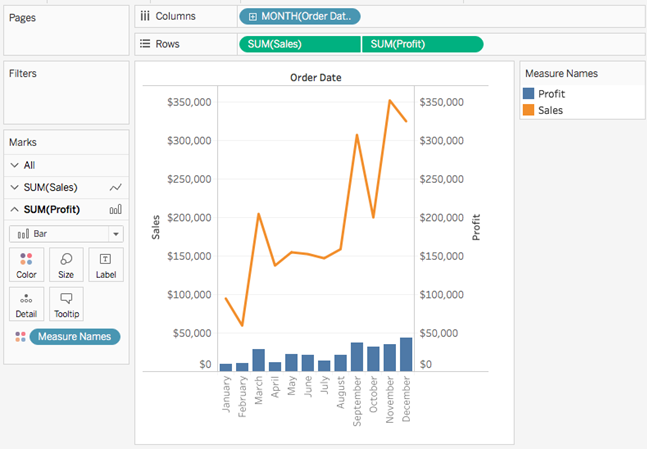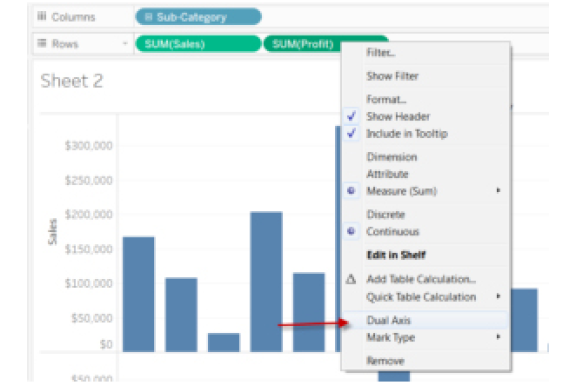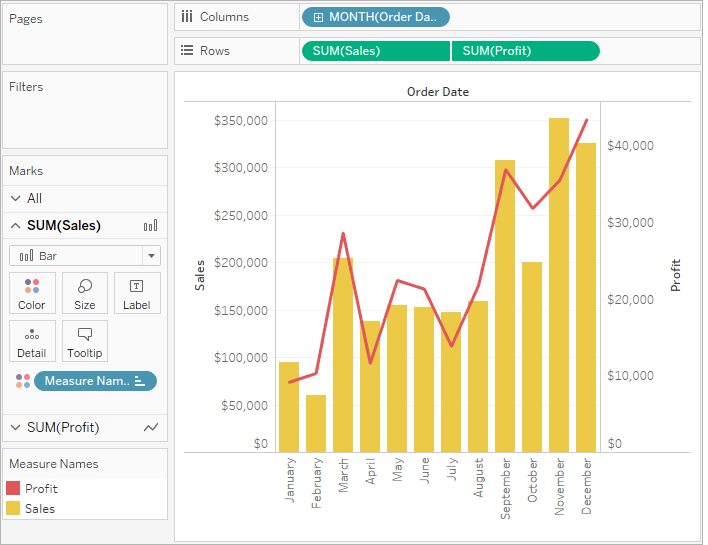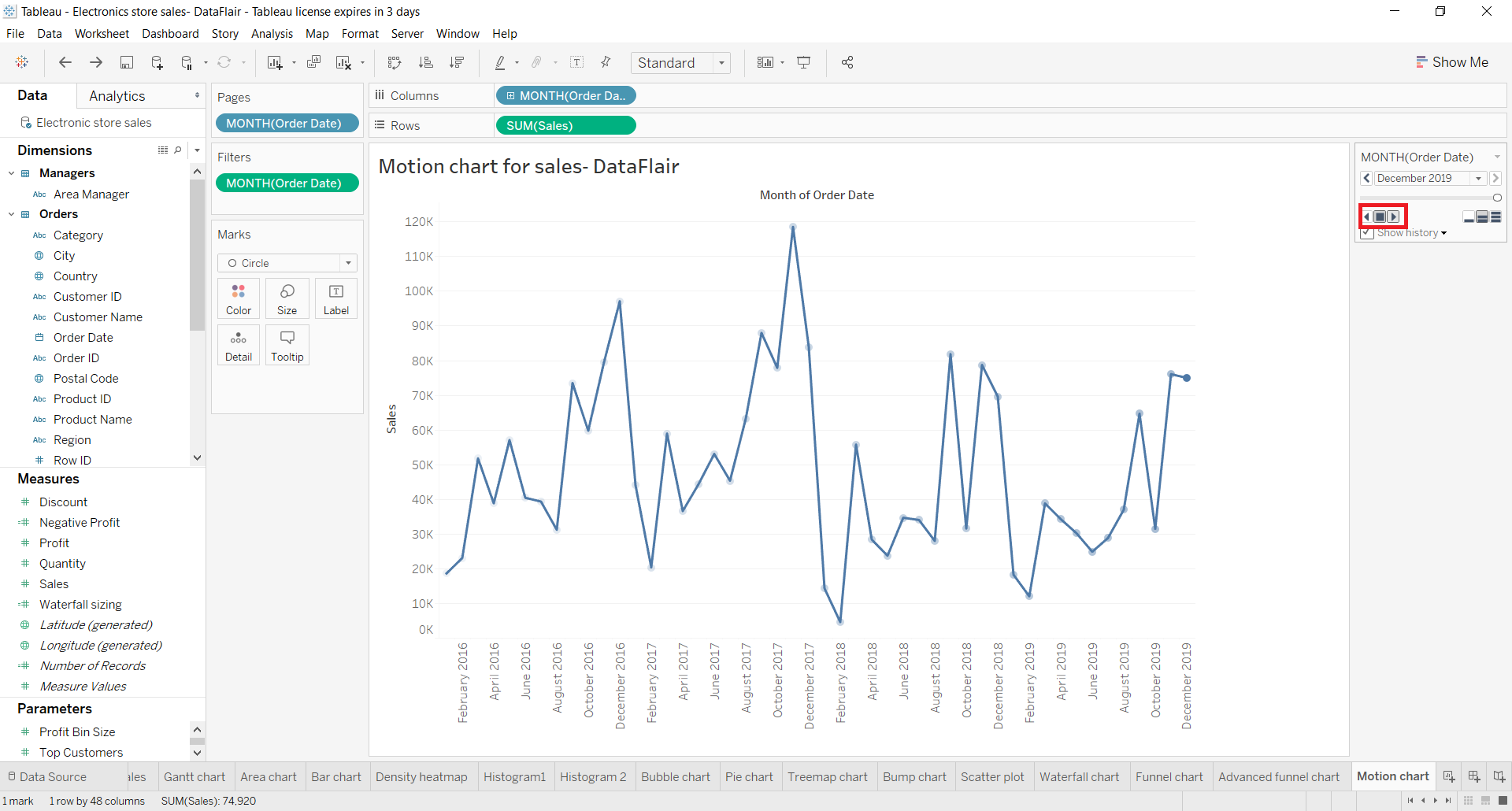Beautiful Difference Between Dual Axis And Blended Axis In Tableau

One axis represents one measure information.
Difference between dual axis and blended axis in tableau. This enables you to choose a different mark for each of the measures letting you create different charts. Once you drag them following Chart report will be generated. On the Marks card click the Mark Type drop-down and select Map.
Add Axes for Multiple Measures in Views. Say we wanted to see our Sum of. On the Marks card labeled All set the mark type to Bar in the dropdown menu.
A dual axis chart creates two independent axes which you can synchronise that you can plot two separate measures on in the same chart. Tableau Share Axis Chart. A map view is created.
On the Marks card labeled SUMSales Click Size and then. In any of these cases you. Tableau Dual Axis Chart.
For example if the original view shows sales for 4 years then the final view would show one column with the difference between sales for two specific years. Types of Tableau Axises - Individual Dual and Blended Axis. Difference between Individual Dual and Blended Axis Types of Filters Quick Global Context At Source On Dimensions and Measures Differences between Tiled and Floating in Tableau Dashboard.
Tableau combined axis charts are created with one shared axis such as an X-axis for a date and two separate axes such as Y-axes for two different measures. Create a dual-axis map from Tableau Latitude generated and Longitude generated fields. In the Data pane under Dimensions double-click State.












